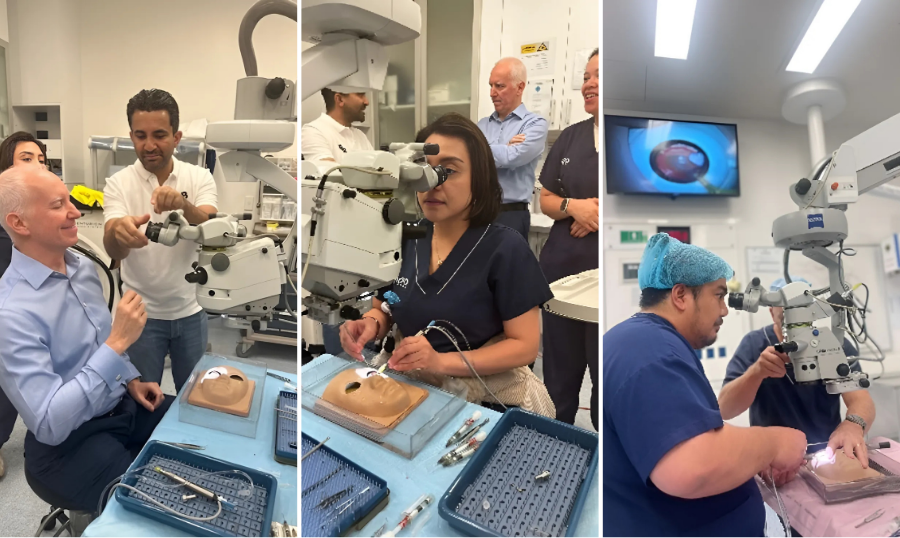Auckland Eye sets new standard in digital accessibility with website toolbar launch
Discover how Auckland Eye is redefining inclusive healthcare by launching New Zealand’s first assistive website toolbar.

Amblyopia is the most common cause of poor vision in children and occurs because the part of the brain that deals with vision for that eye has failed to develop normally.
The most common cause for amblyopia is a problem with poor focusing due to hyperopia (far-sightedness), or astigmatism (irregularity of the focus). Another cause is also Strabismus (a squint or turning eye). Anything that interrupts the passage of light into the eye, such as a scar on the cornea (surface of the eye), a cataract (an opaque lens in the eye), or a very droopy eyelid can also lead to amblyopia.
The vision centre in the brain is constantly developing during the first seven to eight years of a child’s life. If the vision is interfered with in any way then the brain will start to prefer one eye over the other and the vision in the other eye will suffer. To reverse the process and correct the vision in the poor eye, it is necessary to make the brain use this eye again.
Treating amblyopia relies on making a child use the poorer eye in order to build the vision up again. Patching, where the good eye is covered is the mainstay of amblyopia treatment. The child is required to wear the patch part time (for a certain number of hours a day). There is also an alternative to patching – eye drops, which blur the vision in the good eye.
It is easier to treat amblyopia successfully if the treatment is started while the child is young. It becomes increasingly difficult to reverse amblyopia beyond the age of 5 years and particularly difficult after 7 years of age.
A squint or strabismus is present when the two eyes are not looking in the same direction. It may be apparent all the time or only when the person is tired, unwell or focusing on a near or distant object. The eye may turn in or out, or one eye may sit higher than the other.
Some children have a weak ability to use the eyes together, and a squint can develop. If a squint is present, the misalignment means that the eyes will lose the ability to work together and achieve 3-D vision (binocular vision). Children may be farsighted and have a focusing problem, in which case the effort of focusing to see clearly may lead to a squint. Glasses alone may correct this problem.
Very occasionally a child may develop a squint because there is a problem with the eye and it has defective sight. The earlier this is detected the sooner treatment can be started. If a child squints with one eye, then the vision in that eye will become lazy (amblyopic) as the brain ignores information from the squinting eye.
Children suspected of a squint should be seen without delay by an eye specialist. No child is too young to be seen.
Treatment involves prescribing glasses if there is a focusing error, particularly with farsightedness. If a child squints with one eye only then this eye will become lazy. The other eye is patched so the child has to use the lazy eye. The aim is to improve the vision in the lazy eye to a similar level of vision as the good eye achieves.
The child will then be able to use either eye to see and the squint will switch from one eye to the other (alternation) which is the aim of the treatment.
If the appearance of a squint is obvious then surgery is carried out to move the eye muscles and thereby straighten the eyes. In some cases surgery is performed early in an effort to achieve binocular vision. In children, surgery is usually performed between the ages of six months and four years. Squint surgery is performed as a day stay procedure usually under general anaesthesia.
Call us on 0800 25 53 93 if you’d like to book an appointment with one of our eye specialists!

Discover how Auckland Eye is redefining inclusive healthcare by launching New Zealand’s first assistive website toolbar.

Macular degeneration is a leading cause of vision loss in older adults. There’s no cure, but its progression can be slowed. Here’s what to know.

Auckland Eye hosted an extraordinary Continued Medical Education (CME) day titled “Walk in Our Surgeons’ Shoes (Socks)”.